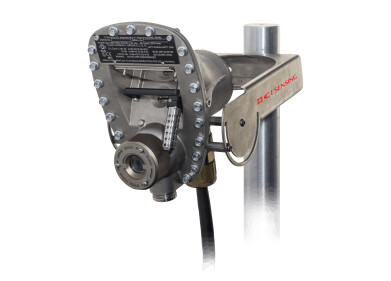Air Monitoring
How Effective Have Clean Air Zones Been?
Apr 29 2022
The following presentation was delivered at AQE 2021. If you or your business are involved in air monitoring, follow the link for updates on next year's Air Quality and Emissions show, an international exhibition of analytical instrumentation for the monitoring of air quality.
Ever since air pollution became a big-ticket issue around 1970, the concentration of all pollutants, besides ammonia, in British air have been systematically slashed by successive Cabinets. Yet poor air quality remains the most significant environmental threat to Britons. Official figures have the death-toll between 28,000 and 36,000, estimating that the economic-toll of PM2.5 and NOx pollution at will exceed £5.3 billion around 2035. The clock is ticking and the nation’s health on the line – but is the British government doing enough to rectify air pollution?
Model Villages
Up and down the country, from the banks of Loch Vaich in northern Scotland to the public gardens around Plymouth harbour, there are almost 300 small, squat boxes sporting caged analytical instruments. This is the Automatic Urban and Rural Network, which monitors road-side air pollution in order to understand long-term trends, improve adherence and evaluate policies – and it’s the foundational means by which the Joint Air Quality Unit (JAQU), a new task-force established by the British government to tackle air quality, is reducing roadside nitrogen oxides.
According to JAQU, around 70% of the nitrogen oxides in ambient air are coming from diesel vehicles on British roads. Reducing the concentration of these pollutant thus requires the sort of comprehensive modelling of road-side emissions provided by the AURN, which the Unit supplements with its own mapping. The resulting compliance reports have unveiled a startling set of facts: of the 43 zones into which the nation is divided for the purpose of reporting NOx emissions, 33 were in exceedance of the statutory limit on nitrogen oxides (40mg/m3) in 2019.
And with the aid of the AURN, the Joint Air Quality Unit were able to whittle it down to the exact 6.1% of British roadways responsible for these infractions – all that’s needed is some way of managing emissions on these roads.
Roadside Picnic?
In principle, a Clean Air Zone reduces the emission of nitrogen oxides by charging polluting vehicles for using one of these roads in such a way as to incentivise motorists to switch to a less offensive mode of transport. In practice, of course, things are murkier. For example, for each stretch of road, there are different culprits, so if you were charged at the Birmingham CAZ, you might well pass through the Zone in Bath unharmed. And in principle, as with any of the measures that the Joint Air Quality Unit proposes, the Clean Air Zones may only have a small effect on the local concentration of nitrogen oxides – but in practice, the results tell another story.
To discover how effective Clean Air Zones have been in reducing roadside nitrogen oxides, click the link to reveal a lecture by JAQU’s Head of Science, Dr. Justine Bejta.
Digital Edition
AET 28.2 April/May 2024
May 2024
Business News - Teledyne Marine expands with the acquisition of Valeport - Signal partners with gas analysis experts in Korea Air Monitoring - Continuous Fine Particulate Emission Monitor...
View all digital editions
Events
Jul 10 2024 Birmingham, UK
Jul 21 2024 Cape Town, South Africa
Australasian Waste & Recycling Expo
Jul 24 2024 Sydney, Australia
Jul 30 2024 Jakarta, Indonesia
China Energy Summit & Exhibition
Jul 31 2024 Beijing, China


















